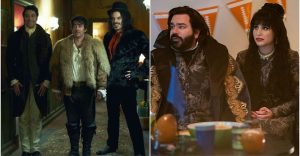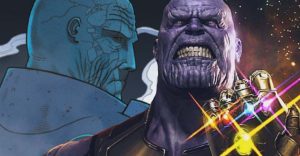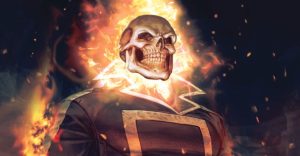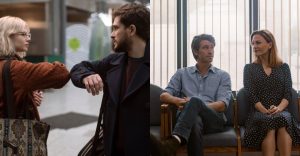The 10 Most Important Hallmarks Of Tim Burton Movies, Ranked
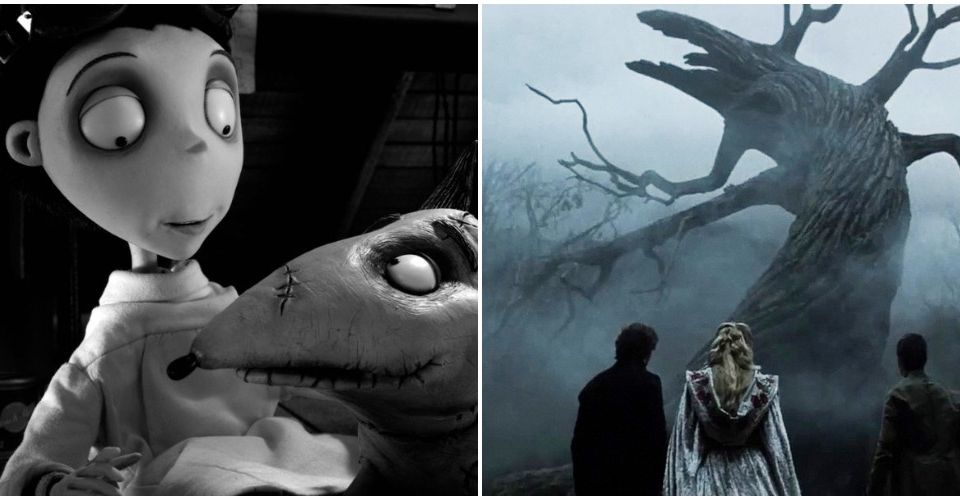
Tim Burton is one of the most prolific directors of all time, famous for his trademarked weird-yet-wonderful style. From comic book movies to creep shows, the man has his brand of filmmaking down to a science. Twisted settings, dark fairytales, and misunderstood monsters are all par for the course with Burton, but audiences still keep coming back for more.
Some say Burton only makes one type of movie, but he’s truly the best at what he does. Sure, he has his gimmicks. But like all great directors like Kubrick and Speilberg, he has those timeless tropes that continue to make him a household name. Here are the most important of them.
10 Gigantic-Eyed Characters

Eyes carry a lot of emotion, and Burton knows that for a fact. Whether in live-action, animation, or a combination of the two, Tim Burton’s characters always seem to have gigantic, wide-eyed expressions. This is something replicated from the director’s art style, but also in certain performances in his films.
Look at characters like the Mad Hatter, Victor Frankenstein, and Emily the Corpse Bride. Their eyes are all freakishly big and round like they’re going to pop out of their skulls. If the eyes are the windows to the soul, Burton’s characters have that in spades. While this is a repeated aspect of his work, it’s not the most important one.
9 A Hidden Jack Skellington

All Disney movies have a hidden Mickey, J.J. Abrams has his red matter, and Tim Burton has his beloved Pumpkin King of Halloween Town. As one of the director’s most famous characters, finding a hidden Jack is Burton’s trademark Easter egg all of his fans can recognize. And who can deny wanting to find that charming smile?
Jack appears in many of Burton’s flicks, including Beetlejuice, Vincent, Sleepy Hollow, and Alice in Wonderland just to name a few. While a fun easter egg, there are more crucial marks that Burton leaves on his movies.
8 Bright Colors or Black and White

Color typically plays an important role in any movie but Burton has a rather unique approach, to say the least. To say his aesthetic can be split sometimes would be putting it lightly. The scenes of his movies are either and highly saturated colors, or black, white, and stark gray with very little in between.
Contrast is the name of the game with this motif. Take for example the pastel pallets of suburbs in Edward Scissorhands or the upper world in Alice in Wonderland versus the opposing mansion and Underland. Visual storytelling is always a must for any successful filmmaker and this facet rates inclusion.
7 Loads of Stripes

Tim Burton is renowned for his crazy designs, but the stripes can get comically obsessive. From Beetlejuice to Jack Skellington, Burton has some strange obsession with the pattern. Not to say that there’s anything wrong with it, but they just keep appearing everywhere in his movies.
Everyone looks good in vertical stripes, but Burton goes the whole nine yards with them. They’re on everything including costumes, set dressing, puppets, and even certain characters. But, yet again, it’s another stylistic choice that would look out of place in anyone else’s body of work.
6 Stop-Motion Animation

The Nightmare Before Christmas, Corpse Bride, Frankenweenie, what do all these films have in common? Stop-motion animation. If Burton can’t get his story across with traditional live-action filmmaking, this tends to be his method of choice. Time-consuming it might be, but it’s truly the best medium to portray his distinct visual flair.
The stop-motion puppets with their otherworldly nature truly capture the director’s distinct and eccentric style. Also, it allows for more creative visuals and aesthetic choices. Bringing to life a giant sandworm isn’t exactly the easiest task in the book. This kind of filmmaking is definitely crucial to Burton’s work.
5 Gothic Imagery

If there’s one aesthetic Tim Burton embraces like a newlywed bride, it’s gothic. But it’s not the black leather, eye makeup, and chains his fan base might be famous for wearing. That would be far too cliche for this unconventional guy. No, Tim Burton goes for the more classic sense of the word in his films.
Ghosts, skeletons, coffins, vampires, and foreboding castles litter this director’s films as they would a traditional Hammer horror feature. Burton himself is a self-proclaimed classic horror fan, and he never fails to give homage to the films that inspired him to pursue his career.
4 Twisted Story, Happy Ending

In the words of Edward Bloom from Burton’s Big Fish, “the more difficult something became, the more rewarding it was in the end. Not only is that a solid mantra for life, but it seems to be a maxim Burton lives by. This can be frequently seen in films like Pee-wee’s Big Adventure, Frankenweenie, and Sleepy Hollow, and it has since become a popular trope for the director.
Burton basically works by a maxim that many filmmakers should expand on. Go as twisted and freaky as possible, but tie it all up with a happy ending. Burton has been working that angle for years, much to the delight of his fanbase, and it’s a core feature of his work.
3 Strange and Unusual Main Characters

“Live people ignore the strange and unusual.” (Beetlejuice) Tim Burton is the godfather of all strange and unusual characters. Every one of his protagonists are either black sheep, freaks, or otherwise outcasts by social norm standards. Coincidentally, many of his fans seem to fit this description as well, and he knows how to make them feel appreciated.
Burton has said before how much of an outsider he was as a young man, so it makes sense that his art imitates his own life. With characters like Edward Scissorhands and Lydia Deetz in the spotlight, he has created characters that viewers can almost always relate to. This is by far one of the aspects that his fans can relate to the most.
2 Musical Score By Danny Elfman

One of Burton’s most frequent collaborators is composer and frontman for Oingo Boingo, Danny Elfman. In nearly every single Burton production from Pee-Wee’s Big Adventure to his reimagining of Dumbo, Elfman has had some musical role to play. Not only is he a wiz behind the conductor’s baton, but the man has sung for Jack Skellington and even composed the iconic themes to films like Batman, Beetlejuice, and Edward Scissorhands.
His scores might feature mainly choruses of ahs, oohs, and ohs, but Elfman is a modern master of the medium. From dark and twisted to weird and whimsical, he continues to do it all. Without this collaboration, Burton’s movies just wouldn’t be what they are.
1 Frequently Casting Favorite Actors In Lead Roles

Helena Bonham Carter, Michael Keaton, and Johnny Depp are all Tim Burton’s frequent and favorite collaborators, and they can often be found in the leading role of many of his masterpieces.
Keaton and Depp both had their careers jumpstarted by Burton’s films, such as Batman and Edward Scissorhands, and he even went on to marry Carter in 2001. Needless to say, Burton’s casting choices are a crucial part of his films.
About The Author











